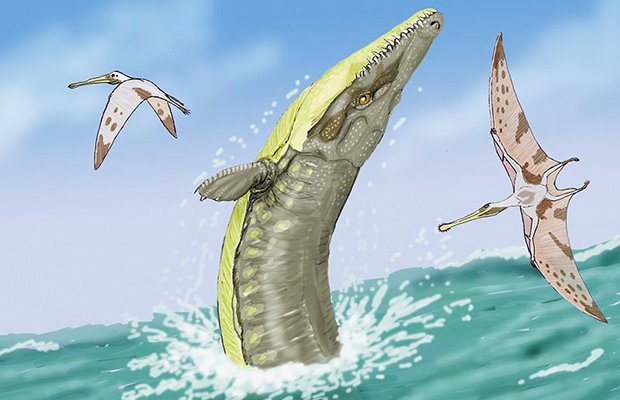Ancient crocs came in all shapes and sizes

PREHISTORIC CROCODILES SUCCEEDED in a dinosaur-dominated world by evolving diverse feeding strategies, says a new study.
Unlike their present-day descendants that mostly live in freshwater habitats and feed on mammals and fish, prehistoric crocodiles were much more varied. Some were built for running on land and had legs held erect beneath their bodies, others had reduced limbs and lived exclusively out at sea, similar to whales and dolphins.
“They were very different creatures to the ones we are familiar with today, much more diverse and, as this research shows, their ability to adapt was quite remarkable,” says Thomas Stubbs, a palaeobiologist at the University of Bristol in the UK.
Recovering from mass extinction
Published in the journal Proceedings of the Royal Society B., the study looks into how the feeding systems of ancient crocodiles evolved, particularly as they recovered from a devastating end-Triassic extinction event about 200 million years ago.
“To do this we focused our efforts on the main food-processing bone, the lower jaw,” says fellow researcher Dr Stephanie Pierce.
The research team examined variation in the shape and function of the lower jaws of more than 100 ancient crocodiles, using computer simulations.
Their findings show how varying jaws enabled ancient crocodiles to survive in vastly different environments during the dinosaur-dominated world that persisted from 235 to 65 million years ago during the Triassic, Jurassic and Cretaceous periods (collectively the Mesozoic Era).
Crocodile jaw diversity

A sample of jaws from the Mesozoic crocodile fossil record. (Credit: University of Bristol)
“Their evolution and anatomical variation during the Mesozoic Era was exceptional,” says Thomas. “They evolved lifestyles and feeding ecologies unlike anything seen [in crocodiles] today.”
The research shows that, following the end-Triassic extinction event, ancient crocodiles invaded the seas and evolved jaws built primarily to capture agile prey, such as fish.
Variation peaked later in the Cretaceous when ancient crocodiles evolved a larger variety of lower-jaw shapes adapted to diverse feeding strategies and to living in terrestrial environments alongside dinosaurs.
“Our results show that the ability to exploit a variety of different food resources and habitats…was crucial to recovering from the end-Triassic extinction and most likely contributed to the success of Mesozoic crocodiles living in the shadow of the dinosaurs,” says Stephanie.
Plant-eating crocodiles
Dr Steve Salisbury, a palaeontologist at the University of Queensland, Brisbane, says that while it’s difficult to extrapolate behaviour and ecology from just one feature, the research demonstrates a new way to measure the diversity of prehistoric crocodilians.
“In combination with the other things we know, this paper highlights that crocodilians in the past were a very diverse group,” says Steve. “Some were exclusively marine with a range of different head shapes and body sizes.”
Steve adds that a few of the terrestrial species even had teeth and jaw designs that may have enabled them to eat plants – again underlining that the specialised, semi-aquatic ambush predators that exist today represent just a small fraction of past diversity.
RELATED STORIES

